Filter by
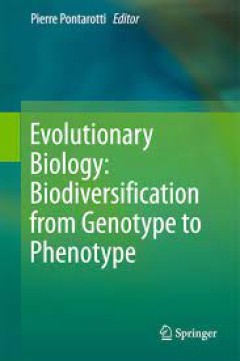
Evolutionary Biology: Biodiversification from Genotype to Phenotype
This book presents 20 selected contributions to the 18th Evolutionary Biology Meeting, which took place in September 2014 in Marseille. They are grouped under the following major themes: · Genotype to Phenotype · Genetic Mechanisms of Diversification · Evolutionary Mechanisms · Speciation and Biodiversity The aims of these annual meetings in Marseille …
- Edition
- -
- ISBN/ISSN
- 978-3-319-19932-0
- Collation
- 28 b/w illustrations, 40 illustrations in colour
- Series Title
- -
- Call Number
- -
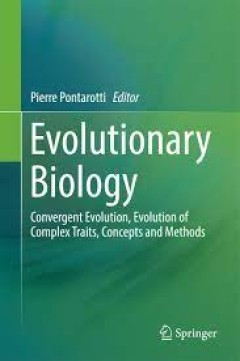
Evolutionary Biology Convergent Evolution, Evolution of Complex Traits, Conc…
This book presents selected contributions to the 19th Evolutionary Biology Meeting, which took place in September 2015 in Marseille. It consists of 22 chapters, which are grouped in four sections: · Convergent Evolution · Evolution of Complex Traits · Concepts · Methods The annual Evolutionary Biology Meetings in Marseille serve to gather leading evolu…
- Edition
- -
- ISBN/ISSN
- 978-3-319-41324-2
- Collation
- 14 b/w illustrations, 36 illustrations in colour
- Series Title
- -
- Call Number
- -
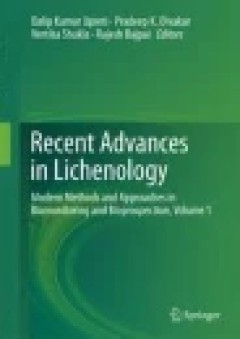
Recent Advances in Lichenology: Modern Methods and Approaches in Lichen Syste…
This book discusses in detail molecular, mycobiont culture, biomonitoring and bioprospection of lichens, providing insights into advances in different fields of lichenology by applying modern techniques and approaches and examining how their application has enhanced or changed classical approaches. It offers a valuable resource, especially for beginners, students and researchers from different …
- Edition
- -
- ISBN/ISSN
- -
- Collation
- -
- Series Title
- -
- Call Number
- 580

Recent Advances in Lichenology: Modern Methods and Approaches in Biomonitorin…
This book discusses in detail molecular, mycobiont culture, biomonitoring and bioprospection of lichens, providing insights into advances in different fields of lichenology by applying modern techniques and approaches and examining how their application has enhanced or changed classical approaches. It offers a valuable resource, especially for beginners, students and researchers from different …
- Edition
- -
- ISBN/ISSN
- -
- Collation
- -
- Series Title
- -
- Call Number
- 580

Triticale
Triticale crop species has received substantial research support since the mid-20th century making it a commercial success in many countries, in diverse value propositions. However, no recent book captures the new knowledge and progresses made in more than 2 decades. The purpose of this work is to review and collate the new knowledge of triticale plant biology and agronomy, while considering th…
- Edition
- 1
- ISBN/ISSN
- 978-3-319-22551-7
- Collation
- XI, 258
- Series Title
- -
- Call Number
- -

Molecular Breeding for Sustainable Crop Improvement
The world population is estimated to reach to more than 10 billion by the year 2050. These projections pose a challenging situation for the agricultural scientists to increase crops productivity to meet the growing food demands. The unavailability and/or inaccessibility to appropriate gene pools with desired traits required to carry out genetic improvement of various crop species make th…
- Edition
- 1
- ISBN/ISSN
- 978-3-319-27088-3
- Collation
- XI, 478
- Series Title
- Sustainable Development and Biodiversity
- Call Number
- -
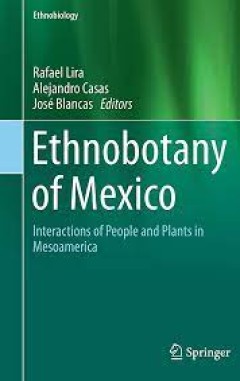
Ethnobotany of Mexico Interactions of People and Plants in Mesoamerica
This book reviews the history, current state of knowledge, and different research approaches and techniques of studies on interactions between humans and plants in an important area of agriculture and ongoing plant domestication: Mesoamerica. Leading scholars and key research groups in Mexico discuss essential topics as well as contributions from international research groups that have conduct…
- Edition
- -
- ISBN/ISSN
- 978-1-4614-6669-7
- Collation
- 21 b/w illustrations, 71 illustrations in colour
- Series Title
- -
- Call Number
- -

Recent Advances in Lichenology: Modern Methods and Approaches in Biomonitorin…
This book discusses in detail molecular, mycobiont culture, biomonitoring and bioprospection of lichens, providing insights into advances in different fields of lichenology by applying modern techniques and approaches and examining how their application has enhanced or changed classical approaches. It offers a valuable resource, especially for beginners, students and researchers from different …
- Edition
- -
- ISBN/ISSN
- 978-81-322-2181-4
- Collation
- -
- Series Title
- -
- Call Number
- 581.3
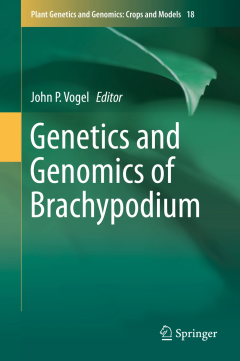
Genetics and Genomics of Brachypodium
Grasses dominate many natural ecosystems and produce the bulk calories consumed by humans either directly in the form of grains or indirectly through forage/grain fed animals. In addition, grasses grown as biomass crops are poised to become a significant source of renewable energy. Despite their economic and environmental importance, research into the unique aspects of grass biology has been ha…
- Edition
- -
- ISBN/ISSN
- 978-3-319-26942-9
- Collation
- XII, 353
- Series Title
- -
- Call Number
- 581.15 VOG g
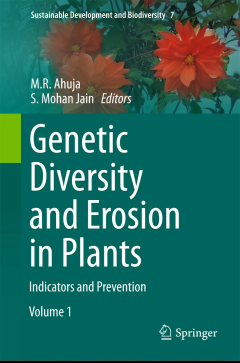
Genetic Diversity and Erosion in Plants
Genetic erosion is the loss of genetic diversity within a species. It can happen very quickly, due to catastrophic events, or changes in land use leading to habitat loss. But it can also occur more gradually and remain unnoticed for a long time. One of the main causes of genetic erosion is the replacement of local varieties by modern varieties. Other causes include environmental degradation, ur…
- Edition
- -
- ISBN/ISSN
- 978-3-319-25635-1
- Collation
- X, 323
- Series Title
- -
- Call Number
- 630
 Computer Science, Information & General Works
Computer Science, Information & General Works  Philosophy & Psychology
Philosophy & Psychology  Religion
Religion  Social Sciences
Social Sciences  Language
Language  Pure Science
Pure Science  Applied Sciences
Applied Sciences  Art & Recreation
Art & Recreation  Literature
Literature  History & Geography
History & Geography